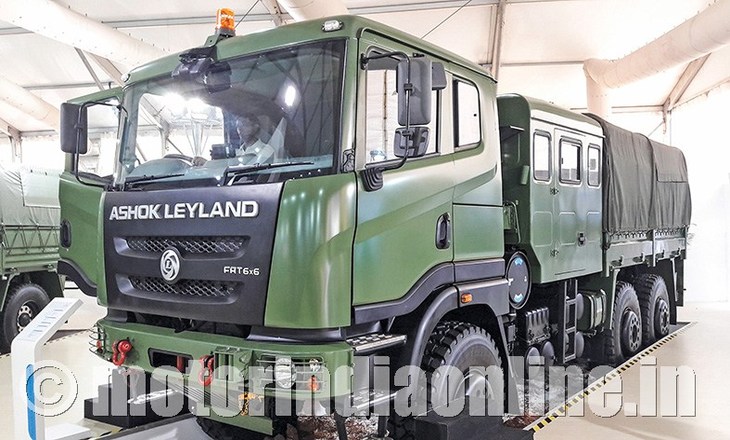“The advantage we have in addressing the business opportunities and competition thereof in the Defence segment is that we are very focused on mobility solutions. We have our large R&D extensively involved in the CV space focussing on engines up to 450 hp, gearboxes, axles and other sub-assemblies; and we leverage that for performance and costs in our bids to compete successfully in the tenders,” indicates Mr. Amandeep Singh, Head – Defence, Ashok Leyland Ltd. (AL).
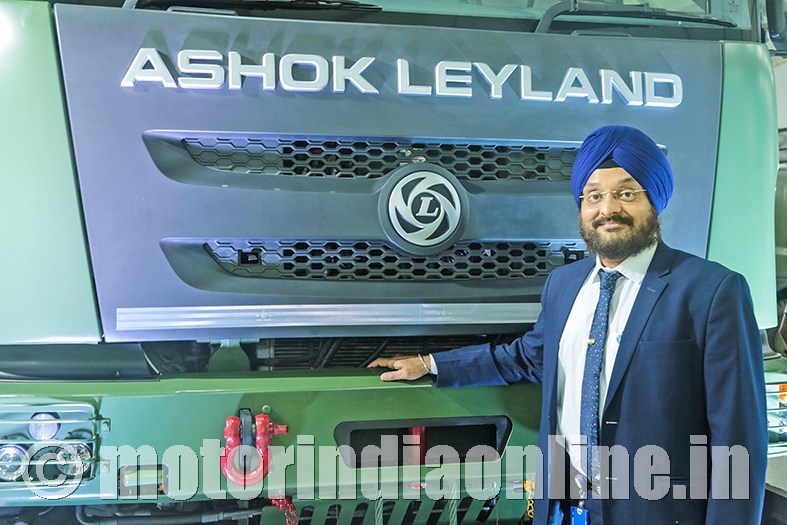
Excerpts:
It is indeed a matter of great pride for a company to be supplying its products to the Indian Armed Forces. In this regard, can you share the highlights in AL’s 70-year journey from the Defence division’s perspective?
I am happy to indicate here that the Indian Army (IA) incidentally is also celebrating its 70th anniversary of operations and we are sharing some history together. AL has been supplying varied vehicles and systems to IA for over 30 years, and we have been there right from their purchase of Indian vehicles for logistics.
We delivered Hippo vehicles long time back and also helped them repower Shaktiman vehicles. For the Indian vehicle purchase, AL participated, and Stallion, our popular vehicle referred in Defence circles as ALS (Ashok Leyland Stallion), had its genesis some 20 years ago. This has become the mainstay of IA logistics operations ever since then, and we have supplied over 70,000 vehicles for their diverse requirements.
The vehicles have proved their utility in the Kargil war and several other operations. AL has entered into collaboration with Vehicles Factory Jabalpur in supplying the kits to them for their subsequent assembly and supply to IA.
Several variants of Stallion have been delivered for special applications that include water bowser, recovery vehicle, fire fighting vehicle, fuel dispenser and truck crane, apart from the supplies to logistics operations like troop carrier, load carrier, missile carrier, ammunition carrier, etc.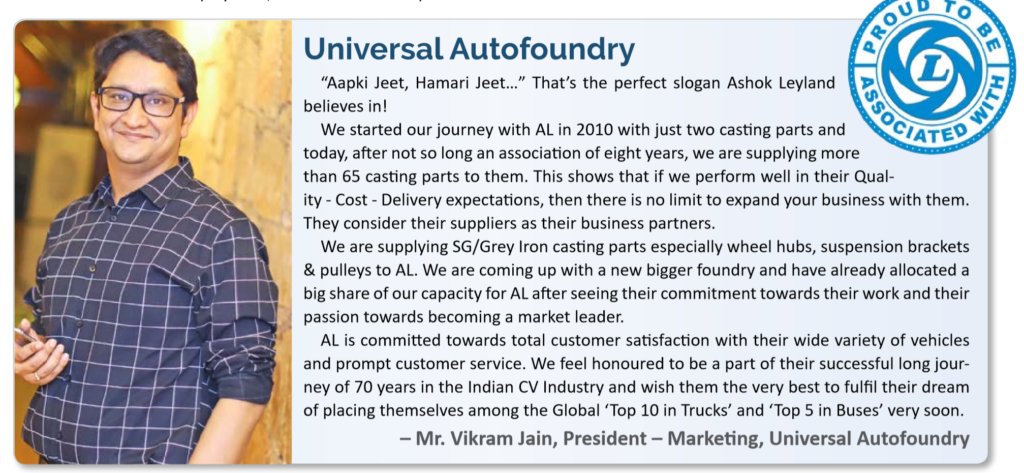
About five years back, when IA decided to indigenise certain equipment we took part in it and won 80% of the tenders, all in the mobility space, our core competence area. We have thus started focussing on other areas of land-based mobility domain like tracked solutions and powerpacks in the vehicle upgradation projects.
Apprise us about the group’s operational set-up, the current projects under execution and those in the pipeline.
We have five business verticals – Stallion, Super Stallion, Armoured, Light Special Vehicles and Tracked vehicles for addressing the Defence requirements. The Stallion division focusses on the logistics requirements, be it for transport of troops, field artillery or special applications. Super Stallion caters to high HP mobility vehicles, viz., from 4X4 all the way up to 12X12.
These are utilised as missile carrier, gun tower, transport of troops and ammunition over rough terrain and as heavy equipment carriers for dozers, battle tanks, etc. Armoured vehicles are essentially bullet proof and side mine blast protected for combat and counter insurgency operations; Light Special Vehicles are meant for quick response and reconnaissance; and in Tracked vehicles, the focus is again on the mobility-related needs.
We are also currently involved in the upgradation of the Russian Infantry combat vehicle engines from 300 hp to 400 hp, besides upgrading the sight and fire controls. We are looking at other engine upgradation opportunities of main battle tanks going up to 1200 hp. We see big opportunities in FICV (Futuristic Infantry Combat Vehicle) and FRCV (Future Ready Combat Vehicle) opening up in tracked vehicles.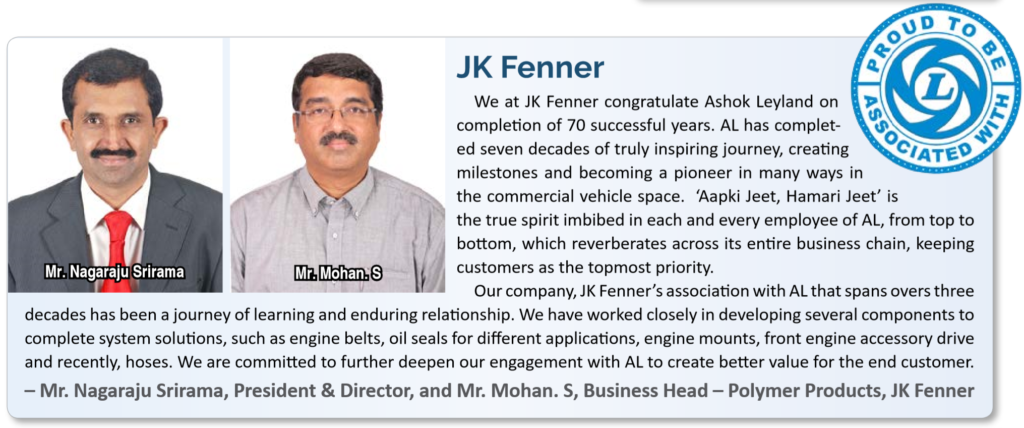
Each business vertical is responsible for developing the vehicle as per the IA needs. The application engineering team in the vertical takes care of the same. The basic mobility platform work vis-a-vis engine, gearbox, suspension driveline, etc., is done by the main tech centre at VVC. Specific requirements are done by the vertical application engineering team.
Also they build the prototype for new tenders, take care of field trials and tests of the vehicles and delivery to IA. While vertical operations and prototype shops are located at Ennore, production of Defence orders is carried out at the Hosur plant.
Can you indicate the financial contribution of the division to AL operations? Tell us also about the export market initiatives.
In the last 2 years, our turnover has doubled to Rs. 800 crores. Army capex last year was about Rs. 27,000 crores. In the mobility area concerning our current operations, it is 5% and the rest being in guns, miscellaneous equipment and services. Over the next 6 to 7 years capex can go up to Rs. 80,000 crores, and from the current 5% play area, we want to move up to 20% in addressing the mobility-related areas.
Our vision is to get one-third market share in our mobility areas amounting to annual revenue of Rs. 5,000 crores. Of course, it all depends on how they raise the capex and how quickly we can roll out the new projects. The share of exports is very low, at around 10%. This is primarily due to AL’s limited operations centring around logistics; and with added new areas, we hope to increase the market share.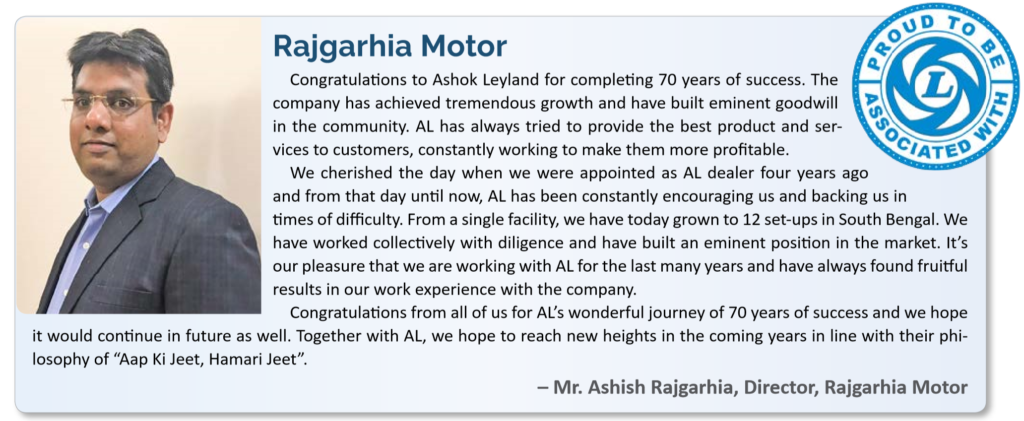
It is to be noted that product development is invariably done for local needs with a long gestation period. Hence, with the developed product, we can look around for markets needing it but cannot modify the same to suit their local needs.
Also, the Indian market is very big and other countries are looking at the opportunities here. Hence the focus will be invariably to expand the market share here by looking at new areas rather than at exports.
The Defence procurement process is stretched over a long period of time. Comment on the same and also on guarantees for supplies and the entry barriers for new business opportunities.
It is real that gestation times are high and the reasons for the same are as follows. Firstly, IA won’t consider any equipment for purchase without the same getting tested in all conditions.
This may take even 8 to 10 years right from the initiation process for procurement. Secondly, they maintain the equipment with all parts and special service tools, and it becomes difficult to have more models of the equipment from maintenance issues. So they stick to the equipment till there is a major change in technology.
Also, with the ‘Make in India’ campaign thrust, it becomes all the more difficult for foreign companies having the equipment to address the IA needs. As for the sub-systems getting integrated on our vehicle, if we are the lead bidder, we take up the guarantees taking back-to-back guarantees from the supplier.
What about the special requirements and specs in the supplies for Defence applications and about the technology adoption in the sector and future avenues for growth.
Vehicles supplied for IA applications have very different specs and quality norms as compared to the similar vehicles supplied for commercial segments. The power to weight ratio requirement is very high, viz., for a given payload the power required is high. Also the gradeability and foldability requirements are stringent.
Vehicles are expected to operate between (-) 30 and (+) 50 deg C and all the wheels are driven. The other special requirements include run flat tyres, centralised tyre inflation system, recovery winch, hatches, gun holders, rotatable camera, etc. Axles are rigid alright, but we have also the technology for articulation to meet the demand.
Powerpack is another segment we are focussing on. Taking typically an artillery gun, it is towed over long distances. However, on the field, it needs to be mobile to escape detection and also target enemy posts. For that, we will supply a powerpack, viz., engine, cooling system, driveline and the steering for its limited movement during operation.
The BS emission norms are not applicable in IA as mobility is given preference over everything, and it’s the way all over the world. As for other technical aspects like ABS and AT, they are already there. In IA, it’s either MT or AT and not AMT. Also, cabins are fitted with A/C to provide comfort, and all the new features for increasing the efficiency of the operating crew are invariably considered.
We have collaboration with the Russian firm ROE for tracked equipment, and are associated with Lockheed Martin of the US for LSVs. We also work with local companies like L&T for bridge laying equipment to bid for the IA projects. The collaborations are invariably tender based, and once it gets standardised, we try to develop on it for offering to other applications and export.
